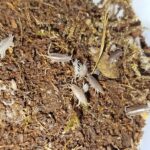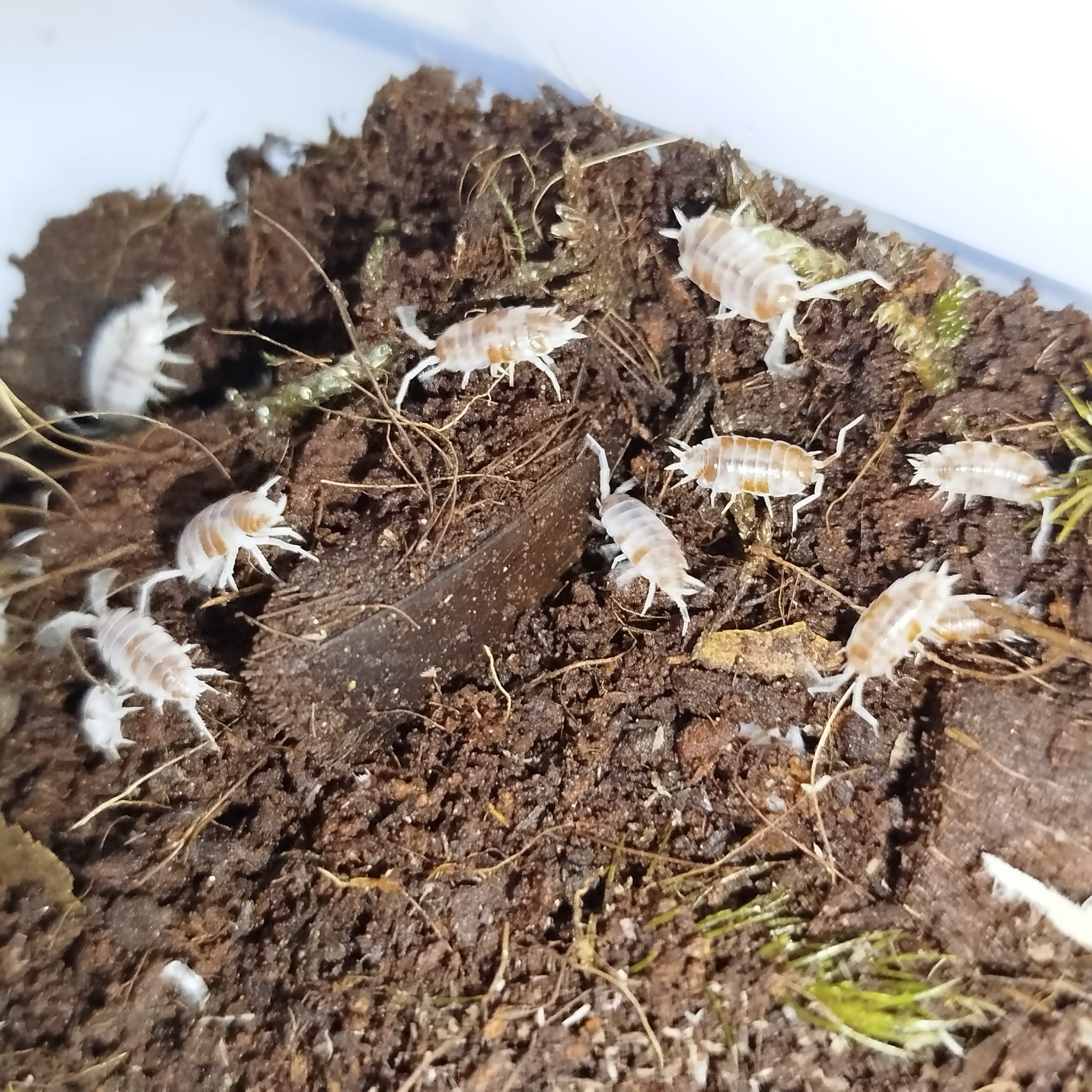

Porcellionides pruinosus “Dalmatian Orange”
1,99€
The isopod Porcellionides pruinosus “Dalmatian Orange” is perfect for terrariums. With its orange color and white spots, it adds a decorative touch while helping to break down organic matter, keeping the environment clean and healthy. Easy to care for and breed.
Technical Sheet: Porcellionides pruinosus “Dalmatian Orange”
Common name: Dalmatian Orange Isopod
Scientific name: Porcellionides pruinosus “Dalmatian Orange”
Family: Porcellionidae
General Description:
The Porcellionides pruinosus “Dalmatian Orange” is a terrestrial isopod species known for its distinctive orange coloration with white spots, giving it a dalmatian-like appearance. This isopod is small to medium in size, reaching between 8 and 12 mm as adults. It is highly valued in terrariums, paludariums, and for selective breeding.
Natural Habitat:
A cosmopolitan species adapted to live in moist environments, preferably in soil rich in organic matter such as leaf litter, decaying wood, and moss. They are very hardy and can tolerate a wide range of environmental conditions.
Care in Terrariums:
- Temperature: 18°C – 26°C (64°F – 79°F)
- Humidity: High (70% – 90%). They prefer humid areas but also require a dry section in the terrarium to prevent health issues.
- Substrate: Recommended substrates include coconut fiber, leaf litter, and decaying wood. Adding calcium (such as cuttlefish bone) is beneficial for their exoskeleton.
- Feeding: Omnivores, they feed on decaying organic matter, vegetables, and occasionally animal proteins (leaf litter, bark, fruits, vegetables, and fish food).
- Reproduction: They reproduce quickly, with females carrying their offspring in a special pouch until the young are independent. Breeding occurs year-round under adequate temperature and humidity conditions.
Benefits:
- Waste Control: They help decompose organic matter, keeping the terrarium clean.
- Easy Reproduction: High reproductive capacity in captivity, making population maintenance easy.
- Non-toxic: Safe to coexist with reptiles, amphibians, and other invertebrates in mixed terrariums.
- Decorative: Their bright colors add aesthetic value to the terrarium.
Observations:
This isopod is ideal for beginners due to its hardiness and easy care. It’s important to maintain a balanced humidity level to prevent them from drying out, but also ensure there are less humid areas for their well-being.
| Options |
10 units |
|---|
Related products
Dola larvae (pachnoda)
there is stock
Grammostola porteri (Rosea)
there is stock
Pseudoglomeris Magnifica
Sold out
Hymenopus coronatus
Sold out
Shelfordella lateralis (ex tartara)(10 units)
there is stock
Blaptica Dubia
there is stock
Armadillidium maculatum
there is stock

























